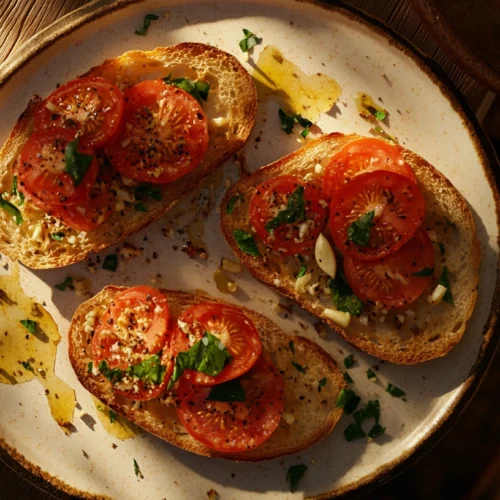
Italian Ciabatta
This authentic Italian ciabatta bread is known for its golden crust, chewy texture, and light, airy crumb. Made with simple ingredients and high hydration dough, it's perfect for sandwiches, dipping in olive oil, or enjoying fresh from the oven.
Equipment
- Digital kitchen scale
- Large mixing bowl
- Bench scraper
- Dough scraper
- Kitchen towel or plastic wrap
- Baking sheet or parchment paper
- Baking stone or steel (optional)
- Oven with steam tray or spray bottle
- Wire cooling rack
Ingredients
- For the Dough:
- 500 g bread flour or Tipo 00 flour
- 400 g water 80% hydration
- 10 g salt
- 5 g instant yeast or 15g fresh yeast
- 10 g olive oil optional
- Optional Preferment Biga:
- 100 g flour
- 50 g water
- A pinch of yeast
Instructions
- Make the Biga (Optional, 12–16 hours before):
- Mix 100g flour, 50g water, and a pinch of yeast. Cover and let ferment at room temperature.
- Mix the Dough:
- In a large bowl, combine flour, yeast, and salt. Gradually add water and mix until incorporated. Add olive oil and the prepared biga (if using). Mix until sticky and elastic.
- First Rise (Bulk Fermentation):
- Cover the bowl and let rest for 2 hours at room temperature. Perform stretch and folds every 30 minutes to strengthen gluten.
- Pre-shape the Dough:
- Lightly flour a surface and gently turn the dough out. Divide into 2–3 rectangular loaves using a bench scraper. Handle gently to retain air bubbles.
- Final Proof:
- Place shaped loaves on parchment paper. Cover loosely and let rise for 45–60 minutes, until slightly puffed.
- Preheat Oven:
- Preheat oven to 230°C (450°F) with a baking stone or tray inside. Place a tray of hot water at the bottom or use a spray bottle to create steam.
- Bake:
- Slide the loaves onto the hot surface. Bake for 20–25 minutes until golden brown and hollow-sounding when tapped underneath.
- Cool:
- Let cool on a wire rack for at least 1 hour before slicing.
Notes
For extra flavor, always use a preferment like biga.
High hydration dough is sticky—use floured or wet hands to handle it.
Do not refrigerate ciabatta; it goes stale faster. Freeze instead.
The dough is supposed to look loose—this is key to the open crumb!